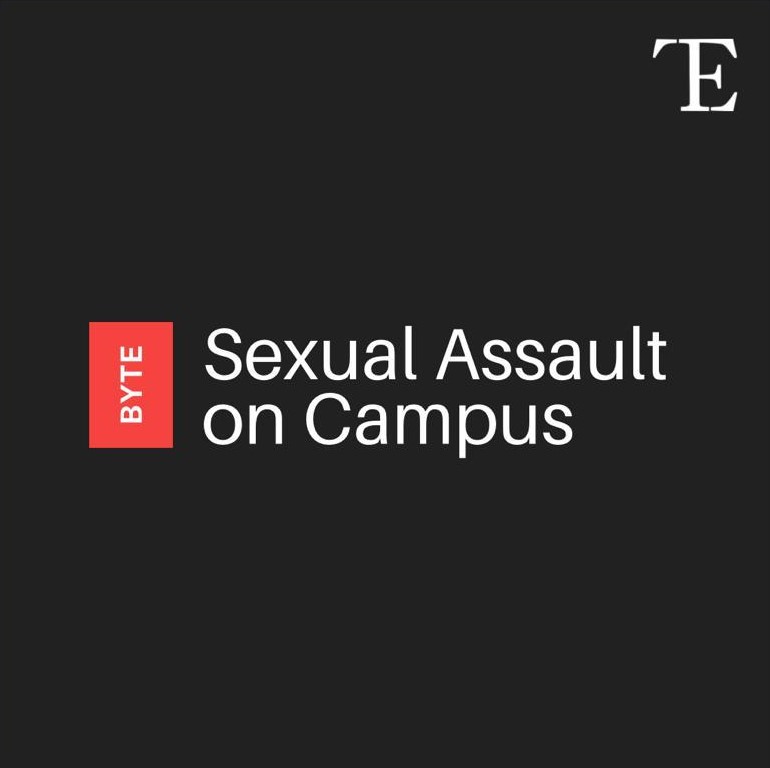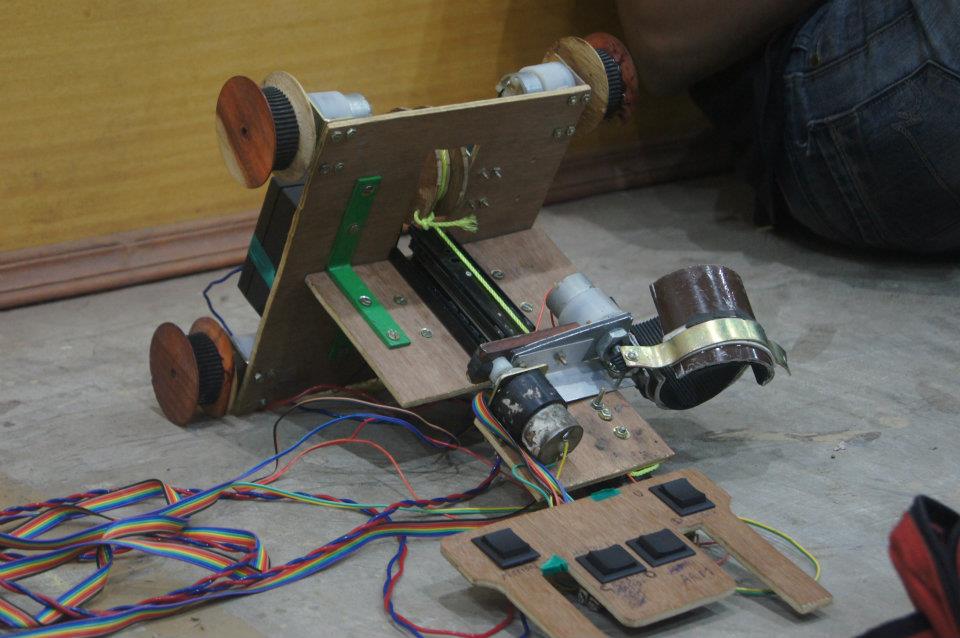SAC, this year, is working towards revamping a three-decade old Students’ Constitution in order to improve student governance on campus. Liza Tom talks about the salient features of the new constitution, as presented during the first reading of the new constitution draft.
These are the links to the existing constitution and the new constitution draft (for unmediated and full impressions)
Here’s an article written by Venkataraman Ganesh, T5E correspondent and SAC’s Redrafting Committee member, on the Students’ Constitution and why it needs to be revamped.
Shyam, MA councillor and chairperson of the redrafting committee, is enthusiastic and indefatigable. He responds with voluble grace to my request for an interview. I arrive a quarter of an hour before the SAC reading is scheduled to begin expecting (naively, as was later pointed out to me) the place to be crowded. But apart from the SAC councillors, the GSB representation stood at the ‘spectacular’ total of 5. But Shyam, along with his team and SAC Speaker Aroon, field and react to questions well, agreeing to additions and changes where they think them fair, countering others with spirited reasons. The SAC will meet again on 27th Jan to finalise the draft, which will then be given to the Board of Students (BoS), headed by the Dean of Students, for approval. Once the BoS approves it, the Senate will pass the motion to make it effective.
***
During a long disquisition on life and other things, interrupted only by many mosquitoes, Shyam also tells me how the constitution happened. The redrafting committee comprising of Shyam Sundar Sridhar, Venkataraman Ganesh, Amala Bonnie, Varun Sridhar, Nitish Reddy, Supreet Hegde, Abhinav Surya, Ankit Jain, Mahesh Kurup and Anwesha Pathi, and Aroon Narayanan provided constant input. The committee shuttled from venue to venue, going from research carrels (which closed too early) the DoSt office to PPT hall to the CCW conference hall, making presentations, adding new chapters and debating the provisions to be put in the new constitution. They read other constitutions, especially campus constitutions from other universities and brought in useful points from them.
Meeting almost every week since August last year and fighting it out, so to speak, the committee got the draft to its present shape. The new constitution is about 60 pages on Google docs, and nearly double the size of the previous document, and is an exhaustive document that could radically alter the fabric of campus governance. It is idealistic, and suggests the kind of change that requires time to effectively manifest itself, but it is also ambitious, comprehensive and responsible- read it, guys.
SAC, currently comprises the Executive Wing, Hostel General Secretaries and councillors from various departments, discusses and conveys views on student matters to the administration. This structure, which was put in place by a constitution written three decades ago, has not changed in the last few years, despite completely altered student dynamics. For example, some PoRs within the SAC, like that of the Branch Councillor, seemed overburdened, while others, like Cultural Secretary (Lit.), not so much. The SAC’s legislative powers were being neglected because its councillors had more pressing executive work- as hostel and branch councillors- and apathy toward SAC work was pervasive. Sometimes, department branch councillors would show up (if they did at all) at SAC meetings with their laptops, and work through the meeting- proxy attendance was also common, because placement work is tough, and SAC work wasn’t as important. Practical and constitutional problems within the SAC led to messy state of affairs today, Shyam asserted. The main idea behind the new constitution was to completely revitalise SAC’s functioning, and increase student participation overall.
In this light, the committee’s major breakthrough was their decision to separate the legislative and executive functions of the SAC. The legislative, henceforth to be known as the Student Parliament, will consist of 52 elected councillors (one per hostel, and two from each department, for taught and research programmes; number is subject to change). The legislative will now include Standing Committees for each Executive post, and the members of the standing committee will hold the post for a year. The Standing committee functions as a review board of sorts, keeping track of its Executive head’s work. Ad-hoc (temporary) committees will be constituted if an issue comes up necessitating one.
The executive will comprise the institute, department and hostel secretaries, all of them spared of legislative work, for which there are corresponding councillors from the three aforementioned categories. So now, each hostel will have, in addition to the secretaries, a hostel councillor to represent it at SAC. The department will have one taught and one research programme representative at SAC, while also retaining autonomous executive secretaries. Other changes include cutting down the second cultural secretary, both at Institute and hostel level- the committee suggests that we have one cul sec for insti, and one per hostel (instead of a lit and a soc secretary each), but this is still under discussion within the SAC itself. In effect, the new constitution creates a mixed SAC, with councillors from departments and hostels who have only legislative purposes- attending SAC meetings and participating in its decision-making process. It also makes department councils independent, and grants them relative autonomy in functioning.
The committee has also included in the constitution a mandatory judicial review body, the Student Court, which will comprise the Dean of Students, a faculty member, and three students, with equal vote (the students will be selected by the DoSt and the Speaker). With the student court rests the power of ‘interpreting the constitution’, ‘impose sanctions on students as provided for under this Constitution’, and to intervene in disputes between students/organisations and faculty, where the fundamental rights that the students’ constitution grants have been violated. The judicial review is easily the most drastic measure among the provisions of the new constitution. The review has formidable powers of legislation and decision-making– “Failure by a student or an organization to comply with the decision(s) issued by the court will result in that student being in violation of a disciplinary policy of the Institute.”, and this action can include fines, temporary suspension, and recommendation for impeachment.
As an indicator of the variety of ideas discussed, Shyam recounts debate on implementing proportional voting through the hostels. A vote share for the councillor was suggested, based on the population of each hostel. But there were other categories, like the department, or the batch, that were ignored in this process. And even though methods were suggested to even the weightage, it was decided that proportional voting was a logistical hassle that didn’t seem worth the effort it would entail. That SAC be divided into three houses- academic/department, research (PG) and general- was suggested, but this too wasn’t practical- on issues related to two or all three houses, how would SAC ensure smooth decision-making? So the committee suggested that all legislative affairs come under the SAC, separating its operations from the executive functions of the hostels, departments and institute-wide secretaries. This would ensure that more work was done, and efficiently at that.
Apart from the above changes, of interest are the provisions that institute transparency where Gymkhana funds are concerned, granting the SAC control over how these funds are spent– “…no money from the Fund can be used without Student Parliament’s approval.” The new constitution also would recognize T5E, a Financial accountability Commission and a Gender Sensitisation and Social Inclusion Committee as ‘constitutional bodies’- these are organisations which are independent except with regard to selection of heads, which the SAC has to first ratify.
***
At the reading, I was privy to SAC dynamics. Councillors suggest (or shout) changes, right from the ordering of the preamble, to the addition of the term ‘hygiene’ to the fundamental right to ‘healthcare and nutrition’ (yes, that’s something we can claim if the draft becomes our constitution). They debate the necessity to qualify fundamental freedoms with ‘reasonable’ restrictions. They wonder how much work the new and purely legislatively empowered councillors will have. At five minutes to 9, they promptly disband for dinner. They will meet on the 27th to discuss the draft again, following which we will know its fate.




